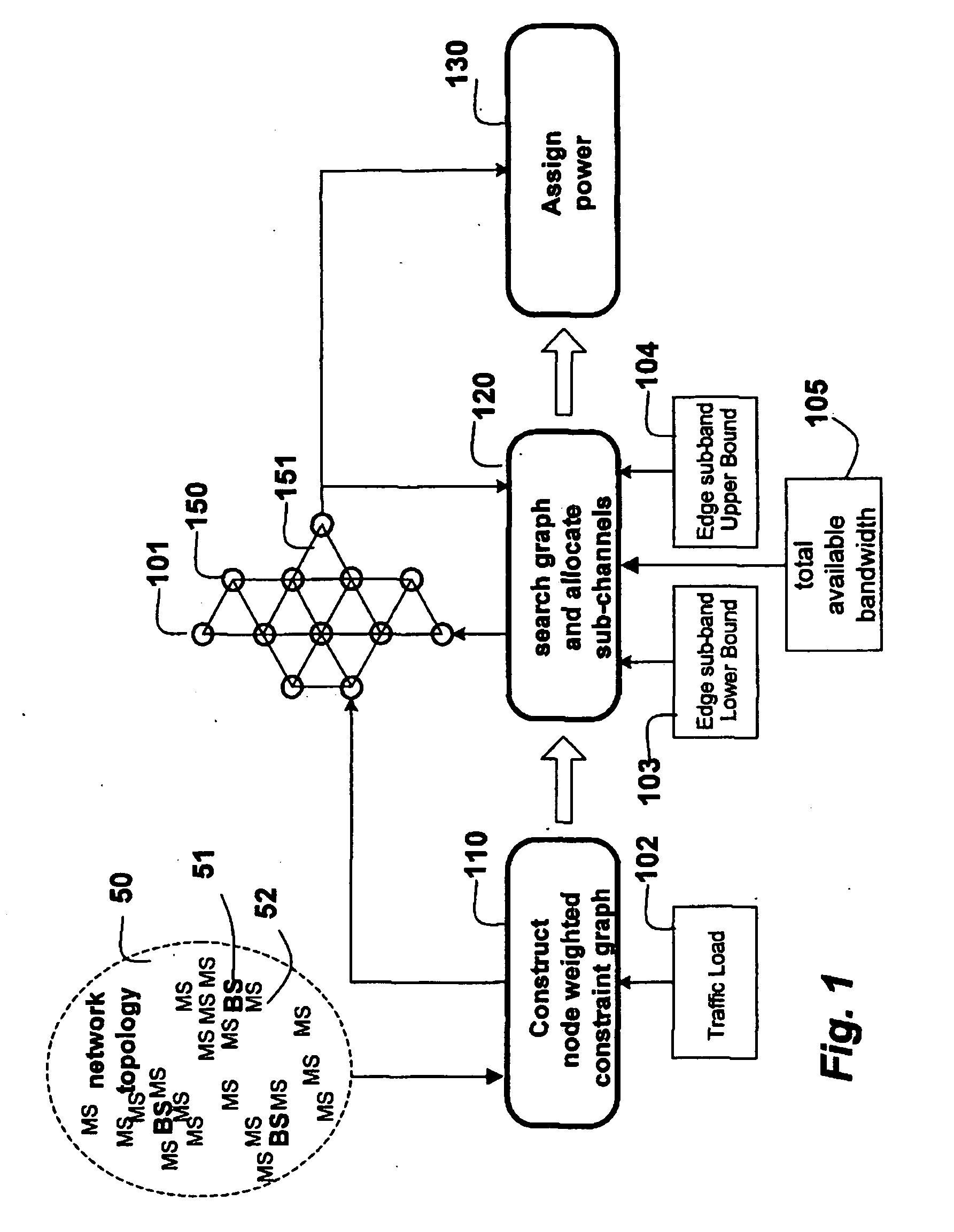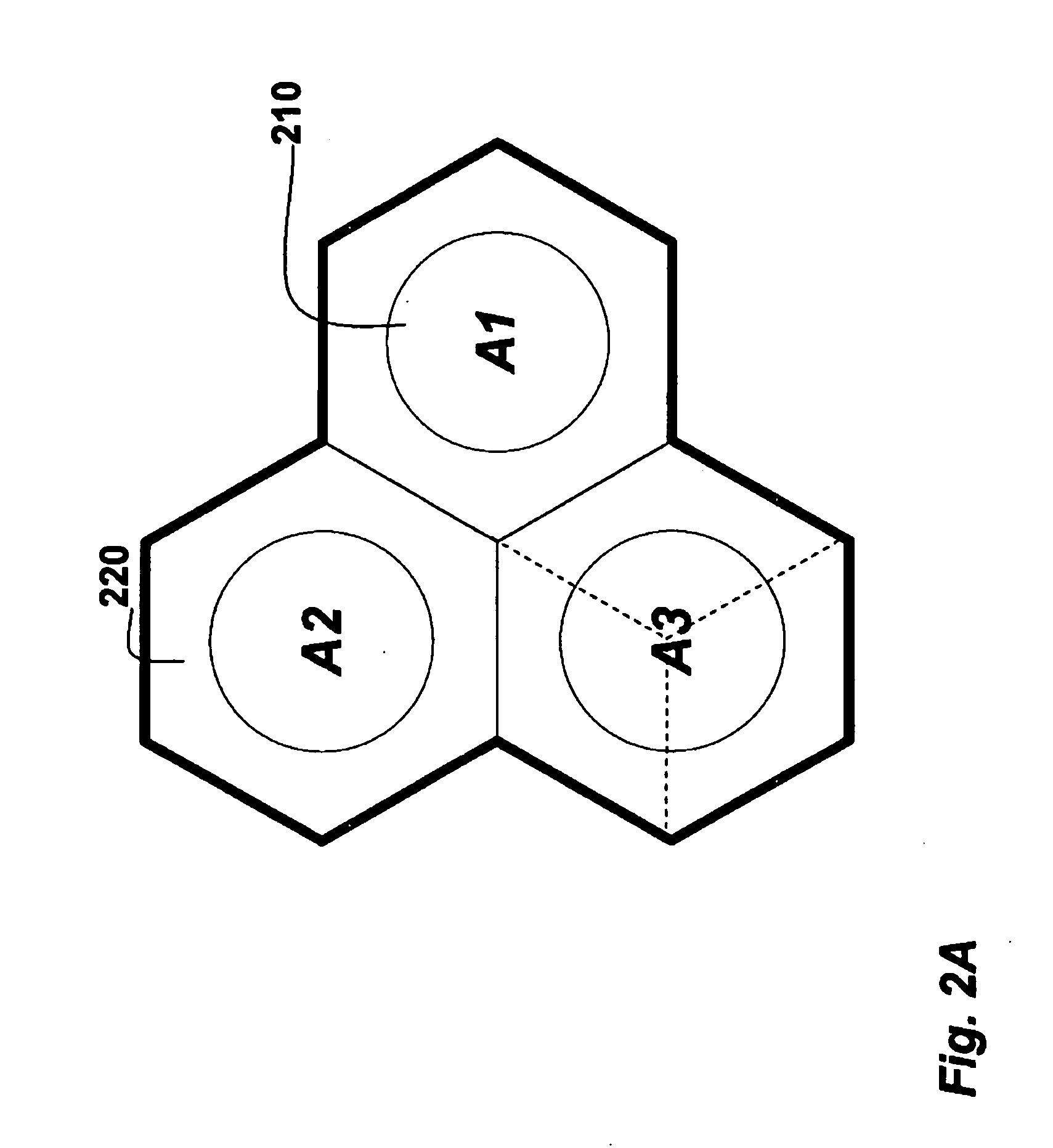Dynamic Fractional Frequency Reuse in OFDMA Networks
a fractional frequency and network technology, applied in the field of allocation of resources in wireless networks, can solve the problems of inability to meet the requirements of fixed ffr schemes with predetermined resource allocation, inevitable inter-cell interference (ici), and the predominant performance limitation factor of wireless cellular networks, etc., and achieve the effect of increasing the center zone throughpu
- Summary
- Abstract
- Description
- Claims
- Application Information
AI Technical Summary
Benefits of technology
Problems solved by technology
Method used
Image
Examples
Embodiment Construction
[0040]OFDMA Sub-Channel Allocation
[0041]FIG. 1 shows a method for allocating resources in an orthogonal frequency-division multiplexing access (OFDMA) network 50 according to embodiments of our invention.
[0042]The OFDMA network includes multiple base stations (BSs) 51 and a set of mobile stations (MSs) 52 for each BS. Each BS serves the set of MSs in its cell. The cell can be partitioned into a center zone near the BS, and an edge zone at the periphery of the cell, see FIG. 2A. It is an object of the invention to minimize inter-cell interference (ICI), particularly interference at MSs in edge zones in adjacent cells.
[0043]The network has a total available bandwidth, which is usually determined by a regulatory agency, e.g., the FCC. The bandwidth can be partitioned in sub-band, and the sub-bands into sub-channels. The size of the sub-bands and number of sub-channels can vary from network to network. Typically, sub-bands are allocated to base stations or zones, and sub-channels to the...
PUM
 Login to View More
Login to View More Abstract
Description
Claims
Application Information
 Login to View More
Login to View More - R&D
- Intellectual Property
- Life Sciences
- Materials
- Tech Scout
- Unparalleled Data Quality
- Higher Quality Content
- 60% Fewer Hallucinations
Browse by: Latest US Patents, China's latest patents, Technical Efficacy Thesaurus, Application Domain, Technology Topic, Popular Technical Reports.
© 2025 PatSnap. All rights reserved.Legal|Privacy policy|Modern Slavery Act Transparency Statement|Sitemap|About US| Contact US: help@patsnap.com



